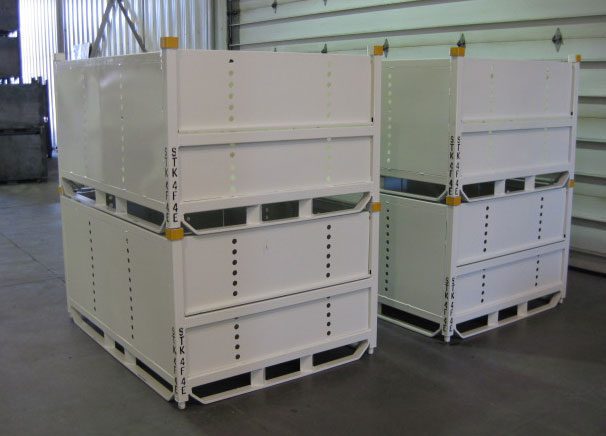Understanding the Characteristics of Effective Bin Storage Fabrication

Storage may not be the most exciting aspect of your business, but it’s nonetheless one of the most critical. Inadequate storage solutions waste money through inefficiency, lost goods, and excessive upkeep. To make sure the bin storage you’re having fabricated matches the needs of your business, and thus eliminates those sources of waste, you need to understand what makes good storage good.
Storage requirements to consider
Your storage requirements can vary greatly with any number of factors, including:
- what you’re storing
- how much you’re storing
- location
- external conditions
For more common configurations, any fabrication team in your local area will have a good idea of what you need. To get the perfect fit, or for unusual bin storage requirements, you’ll want to work with a fabrication company with a knowledgeable engineer on the team.
Storage capacity. The actual volume of storage necessary for your purpose. Depending on various factors, you’ll often be better served by multiple smaller bins than a single immense one. This will also be a factor to consider when looking at later requirements. You may need to split your storage across more bins to improve discharge rate.
Discharge frequency. How often you’ll need to discharge the contents of your bin storage. More frequent discharge means more frequent adjustments and movement. That in turn requires a bin that’s more rugged and more user-friendly than one with relatively rare discharges. This may also inform your choice of flow pattern, a subject we’ll discuss later.
Discharge rate. The actual rate of flow required for your operations. This can be very difficult to calculate if you’re storing nonstandard goods, especially if the particulars of the goods involved don’t readily match any ‘solved’ goods. If you anticipate a challenge here, it’s crucial that you work with qualified engineers to develop your design.
Temperature. Controlling the temperature is critical in any storage, with very particular requirements for various foodstuffs and other perishables. A storage bin that can maintain an appropriate temperature in one environment may not be suitable or cost-effective in another, so it’s important to assess the location carefully.
Pressure. Whether it’s the simple pressure exerted by the weight of what you’re storing, potential gas build up due to temperature fluctuations, or the change of pressure during discharge, it’s critical that your bins be constructed to readily withstand both expected and unexpected drops and rises of pressure.
Flow patterns
As important as the raw storage requirements are, of course, the method of discharge is just as important. There are generally speaking three flow patterns to consider for your needs. It’s crucial that you know which one is correct according to your application and other considerations. Your flow pattern will greatly inform the final design of your bin storage units.
Mass flow. When budget and space aren’t concerns, mass flow patterns are generally ideal. In a mass flow pattern bin, all the material moves consistently at once. A well-designed bin designed to produce mass flow results in a first in, first out flow even with trickier powders and bulk solids. The exact properties to produce this result will vary with the other requirements of your bin storage vessels.
Funnel flow. A funnel flow pattern requires minimal headroom and generally reduces fabrication costs, but is also known for an assortment of problems. In a funnel flow pattern, the materials along the walls of the bin usually remain stationary while the material along a central core flows down. This results in erratic flows, segregation of the stored materials, flooding, and ratholing (a problem where a channel flows out above the outlet but the rest of the material remains in the bin). These problems vary greatly with the material in question. If a first-in, last-out flow is acceptable for your needs, the cost efficiency of funnel flow bins is difficult to match with other design choices.
Expanded flow. An in-between flow pattern which borrows strengths from both patterns, but is generally not going to be cost-effective for smaller bins. Requires less headroom than a mass-flow pattern bin, but can still have minor dead zones for flow along the edges. This can be a good compromise in controlling costs. If the problems of funnel flow are unacceptable, but the budget or space required for a mass flow pattern isn’t available, consider expanded flow.
Parting thoughts
If you get these factors figured out and work alongside an experienced fabrication service, you’ll see no problems from your bin storage configuration. Make sure your units will be well-equipped for both safe, effective storage and safe, effective flow. Only by going into the fabrication process with a firm understanding of your storage requirements, flow requirements, and other unique factors will you be able to obtain the best possible result.

For more detailed information on how we can meet the needs of your business in the United States, please contact us at Swanton Welding Company Inc. You can visit us online at SwantonWeld.com or reach us directly at 419.826.4816.
